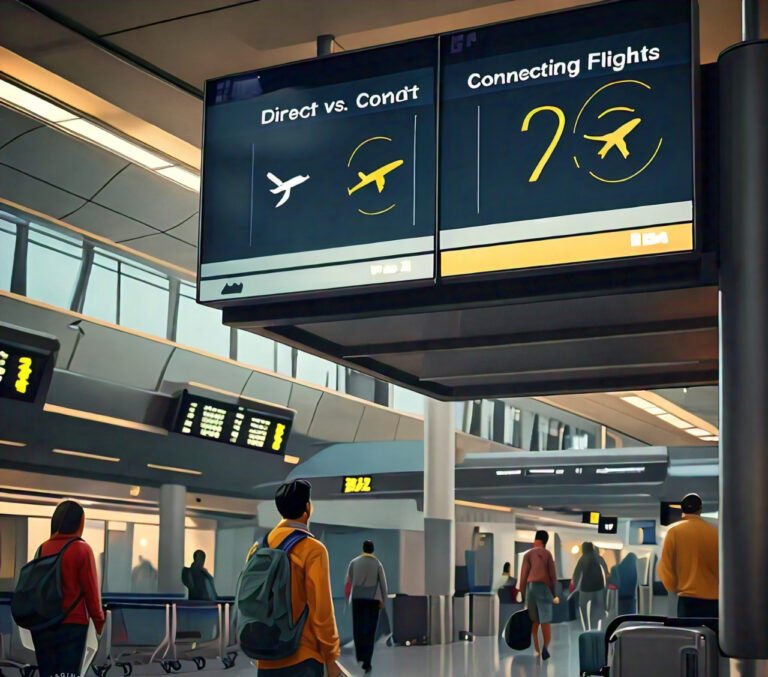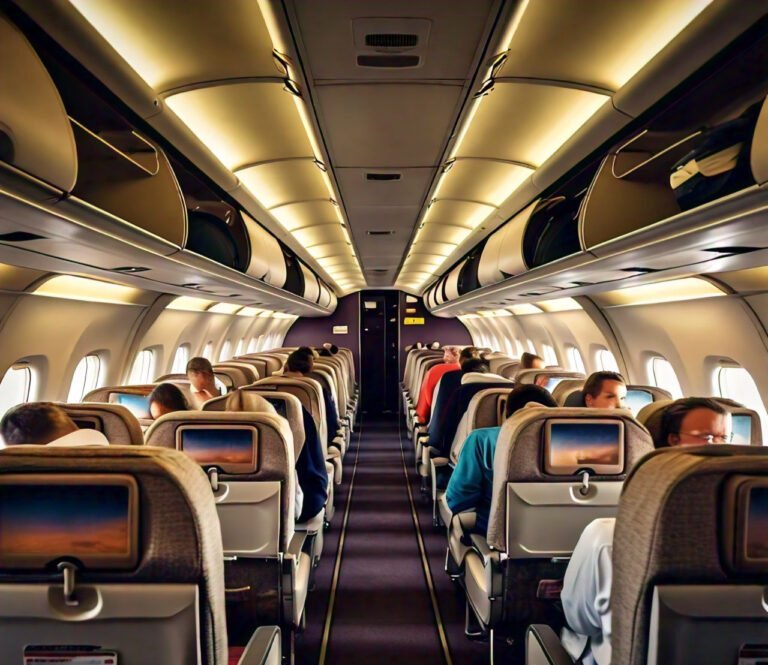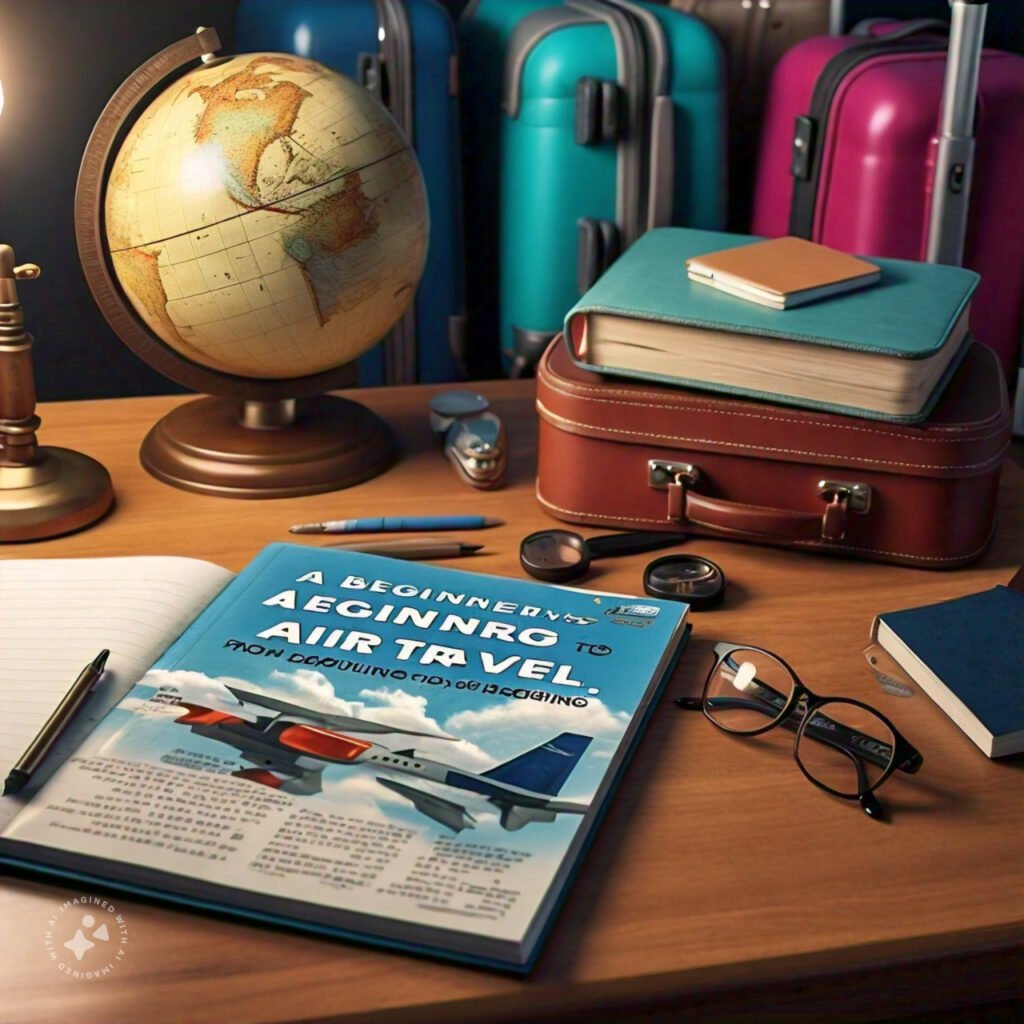Introduction
Air travel can seem like a complex process, especially for those flying for the first time. However, by understanding each step involved, from booking your flight to boarding the aircraft, you can make the journey smoother and more enjoyable. This guide is specifically designed for beginners, offering a comprehensive overview of air travel, and will ensure you know what to expect every step of the way.
1. Understanding the Basics of Air Travel
Air travel has revolutionized how we explore the world, offering both speed and convenience for long-distance travel. While the process can initially seem overwhelming, breaking it down into stages makes it easier to handle. Whether you’re flying for a business trip, vacation, or another reason, understanding the ins and outs of the process is key to reducing any anxiety or confusion.
Flying involves multiple stages, including booking your ticket, preparing for the journey, navigating the airport, boarding the flight, and disembarking at your destination. By learning about each step, you’ll be well-prepared for a stress-free travel experience.
2. Choosing Your Flight
Direct vs. Connecting Flights
One of the first decisions you’ll face when booking a flight is whether to choose a direct flight or a connecting flight. Direct flights are faster because they go directly to your destination without stopping at any other airports. These flights are typically more convenient, but they may be more expensive.
On the other hand, connecting flights involve a layover at another airport, which means your journey will take longer. While connecting flights are generally cheaper, they can introduce complications such as longer travel times, the risk of delays, and potential missed connections.
Choosing the best option depends on your time, budget, and preferences. For shorter trips or those with a tight schedule, direct flights may be worth the extra cost. However, for longer trips or when budget is a priority, connecting flights can provide significant savings.
Understanding Fare Classes
When booking air tickets, you’ll come across different fare classes such as economy, premium economy, business, and first class. These classes differ in terms of cost, comfort, and amenities offered. For a beginner traveler, most flights will likely fall into economy class, which offers the most affordable option but fewer perks compared to the higher classes.
Premium economy offers a bit more legroom and additional services, while business and first-class tickets are designed for travelers looking for luxury and comfort. However, business and first-class tickets come with a hefty price tag. It’s essential to understand the class of service and its corresponding benefits before making your decision.
3. Booking Your Flight
Online Booking
In today’s digital age, online booking has become the most convenient and efficient way to book a flight. Various online platforms, such as Google Flights, Expedia, and airline websites, allow you to search for flights based on your travel dates, destination, and budget. These platforms provide detailed information about different flights, including prices, flight times, and available services.
Online booking is particularly beneficial for comparing prices across multiple airlines, helping you make informed decisions. Additionally, many platforms offer customer reviews, which can provide insight into the quality of service you can expect from a specific airline.
Using Travel Agents
If you prefer a more personalized approach or if your travel plans are complex, using a travel agent can be an excellent alternative. Travel agents can help you find the best deals, assist with complex itineraries, and offer expert advice, especially for international travel.
Although travel agents charge a service fee, their assistance can save you time and effort, particularly when booking multi-leg or last-minute flights. They can also help navigate travel restrictions and provide recommendations tailored to your preferences.
The Importance of Flexibility
When booking a flight, flexibility with dates, times, and even airports can help you save money. If you’re open to traveling on different days or during off-peak hours, you may find significantly lower fares. Many airlines offer cheaper tickets for early morning or late-night flights, which can help you reduce the overall cost of your trip.
Being flexible also helps when unexpected changes occur, such as flight delays or cancellations. You can more easily adapt and find an alternative solution if your schedule allows.
4. Preparing for Your Trip
Packing Essentials
Packing can be one of the most stressful parts of air travel, especially if you’re unsure about what to bring. To make sure you’re prepared, pack essential items such as:
- Identification: Ensure you have valid ID, like a passport for international flights or a driver’s license for domestic travel.
- Travel Documents: Always have your flight confirmation, boarding pass, and accommodation details handy.
- Electronics and Essentials: Don’t forget chargers, a travel pillow, snacks, and medications that you may need during your journey.
Carry-on vs. Checked Baggage
Airlines typically have two categories for luggage: carry-on and checked baggage. Carry-on bags are small enough to fit in the overhead bin or beneath your seat, while checked baggage is larger and stored in the aircraft’s cargo hold.
Ensure your carry-on bag complies with airline regulations regarding size and weight. For longer trips, you may need to check in larger luggage, but be mindful of extra fees that may apply if your baggage exceeds the weight limit.
What to Expect at Security
Airport security is an essential part of the air travel experience. Be prepared to go through metal detectors, show your ID and boarding pass, and have your carry-on bag scanned. You’ll likely need to remove belts, shoes, and jackets, and place your electronics and liquids in separate bins for screening.
Ensure that any liquids in your carry-on are in containers of 100ml or less and stored in a clear, resealable plastic bag.
5. Arriving at the Airport
Airport Arrival Time
Arriving early at the airport is crucial for a smooth travel experience. For domestic flights, aim to get to the airport at least 2 hours before your scheduled departure. For international flights, it’s recommended to arrive 3 hours in advance, as you’ll need extra time to go through customs and immigration.
This gives you enough time to check in, go through security, and find your departure gate without rushing.
Check-In Process
Once at the airport, you can check in for your flight either online in advance or at the airport check-in counter. Online check-in allows you to skip long queues and get your boarding pass electronically, which saves time. Some airlines even allow you to select your seat when checking in online.
If you choose to check in at the airport, make sure to have your ID and flight details ready. Airline staff will assist you with the process and check your baggage if necessary.
6. Navigating Security
Security Checkpoints
After check-in, you’ll proceed to the security checkpoint, where you’ll need to present your ID and boarding pass. Security staff will direct you through metal detectors and x-ray machines for both you and your luggage. Be sure to follow instructions from security officers, as there may be specific guidelines depending on the airport.
Prohibited Items
To ensure safety, certain items are prohibited from being carried on board, such as sharp objects, large quantities of liquids, and certain electronics. Always check the prohibited items list for your airline and destination before you pack.
7. Waiting for Your Flight
Finding Your Gate
After passing through security, you can head to your departure gate. Gates are typically numbered and displayed on large digital boards throughout the airport. Make sure to double-check the gate number and keep an eye on any announcements regarding your flight’s status.
Airport Amenities
While waiting for your flight, you may want to take advantage of the airport’s amenities, including shops, restaurants, lounges, and free Wi-Fi. However, always ensure that you remain near your gate to avoid missing any updates or boarding announcements.
8. Boarding the Plane
Boarding Groups and Zones
Airlines board passengers in groups or zones, which are usually indicated on your boarding pass. It’s important to listen for announcements about when your group or zone is called to board.
Boarding Process Tips
Have your boarding pass and ID ready when you’re called to board. Make sure your carry-on is packed and ready for storage in the overhead bin or beneath your seat. Also, be mindful of the boarding process to avoid delays for yourself and other passengers.
9. Onboard the Aircraft
Seating and Cabin Classes
Once onboard, you’ll find your assigned seat. Seats can vary in comfort depending on the airline and the class of service. Economy seats are standard, while business and first-class seats are more spacious.
In-Flight Entertainment and Meals
During the flight, you can enjoy in-flight entertainment, such as movies, TV shows, and music. Many airlines also offer meals and snacks, especially on long-haul flights.
10. Arrival and Disembarkation
Exiting the Plane
Once your flight lands, follow the instructions from the flight crew for disembarking the plane. Be sure to take all your personal belongings with you, and remain patient as passengers ahead of you exit.
Baggage Claim
If you checked baggage, proceed to the baggage claim area to retrieve your luggage. Baggage claim belts are usually marked with flight numbers, making it easier to find your luggage.
11. Conclusion
Understanding the steps involved in air travel helps ensure a stress-free journey, especially for first-time flyers. By preparing in advance and being aware of what to expect at each stage, you can enjoy your travel experience with confidence.
Last Update: November 13, 2024





